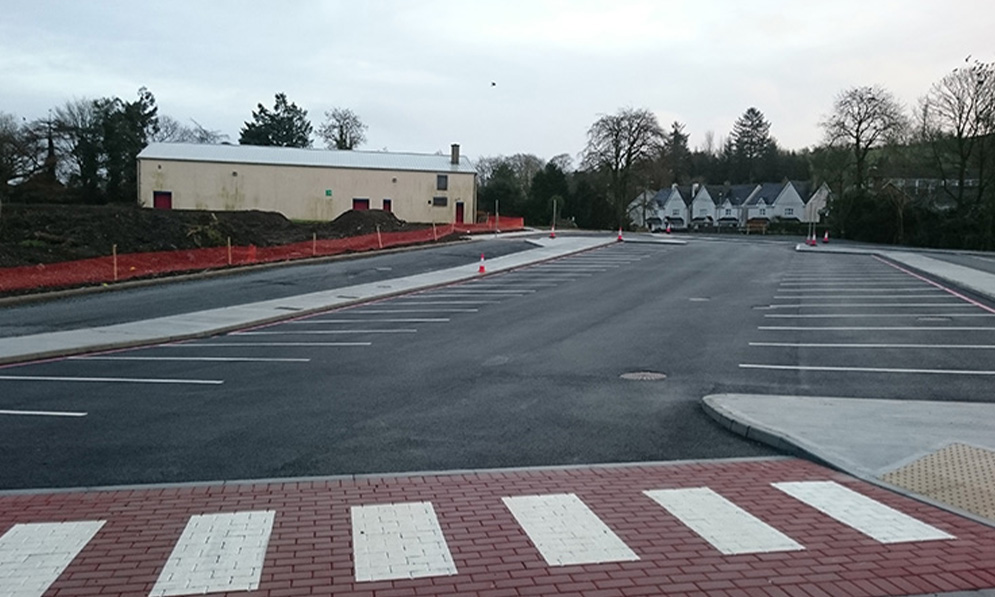The Facts About High Performance Road Marking Services

Car Park Markings Northamptonshire of today's road markings
With increasing volumes of road traffic and the necessity to improve safety, highway line markings probably provide the biggest impact to the road user in every its various forms for direction guidance and home elevators the move, especially at night. It is significantly less than one hundred years ago that the initial road markings were recognised officially being an aid to movement on the highway.
The initial white line was a hand painted line also it wasn't until the early 1940's that screeded thermoplastic was used, due to the shortage of fuel based solvent for paint.
For several years thermoplastic has been the answer for the road marking market in the united kingdom with its relative simple application generally in most conditions for 12 months of the entire year.
Until the late 1990's thermoplastic road marking materials were specified to meet up a recipe of ingredients and application thickness in tender documents. Regarding retro-reflectivity performance, this is met by the percentage and type of glass beads within the mix and initially applied to the surface of the new marking.
However, its inability to retain the surface applied glass beads and reliance on vehicle wheel-overs to expose the glass beads held within the material has sometimes resulted in the merchandise failing to provide adequate retro-reflectivity performance at night.
However, despite the exclusive use of thermoplastic in the U.K. for road markings paint remained the number one choice for around 70% of the worlds highway markings market because of its powerful in luminance and retro-reflectivity.
The result of change to Performance Standards
A steady decline in the typical of materials used and road marking services workmanship through the late 1970's and 1980's came into being through increased competition, lack of investment in employee training and central governments emphasis to reduce local authority costs that led ultimately to manufacturer and contractor price cuts. It is believed that road marking expenditure in 2006 have not significantly increased since this earlier period.
The introduction of European Standard EN 1436 in 1997 meant an end for the BS3262 recipe specification. This change has meant that engineers can select and specify a typical of performance they might need for his or her highway marking service.
It's advocated that the street marking service industry, all together, was not properly prepared for this change

The launch of BSEN 1436 led to the development of several products with improved performance characteristics that produce them ideal for consideration in the united kingdom.
Two specific regions of development have already been Waterborne Acrylic Paints and a two-component resin based system, Methyl-Methacrylate (MMA), both have powerful characteristics.
In particular a fresh generation of improved resins have enabled Waterborne Acrylic Paints manufacturers to boost drying time, durability, high luminance and retro-reflectivity and safer operator handling. Combined with a speed of application, the merchandise becomes more acceptable for road marking maintenance with improved safe practices benefits.
HyperLine used as a Maintenance Treatment
As mentioned previously Paint has been useful for highway markings successfully in Europe and other countries for several years with outstanding retro-reflectivity results.
Five years ago, a West Country based road marking services company identified a dependence on the usage of Waterborne Acrylic Paint (HyperLine) on UK roads during discussions with Term Maintenance Agents and Contractors. Various stretches of highway markings were re-sprayed with the product on a number of different forms of road and the visual impact was impressive. The outcomes indicated performance levels of retro- reflectivity far greater than comparable thermoplastic markings.
Further development of product formulation and the purchase of a purpose-built, truck mounted high-speed applicator; has provided improved performance both in durability and retro- reflectivity together with productivity five times higher than with conventional sprayed thermoplastic methods. Clients have began to see the advantages and great things about the system justify its consideration alternatively for the maintenance of existing centre and edge line road markings.
In the last five years an array of roads varying from high speed Motorways and Trunk Roads to Principle and Rural roads have already been treated with equal success.
In conclusion
Since their introduction all those years back road markings have become an important aid to safety and guidance on our road networks. Their continuing improved performance is crucial, considering today's increasing demands on our highways.
Maintaining the road markings within the true meaning of quality assurance supported by documented evidence and the visual impact from high performing road markings should be an Industry standard.
The will to use a selection of new processes/products to boost performance is vital if the Industry would be to meet up with the requirements of the new Standards, the Highways Agency and our customer the street User!
